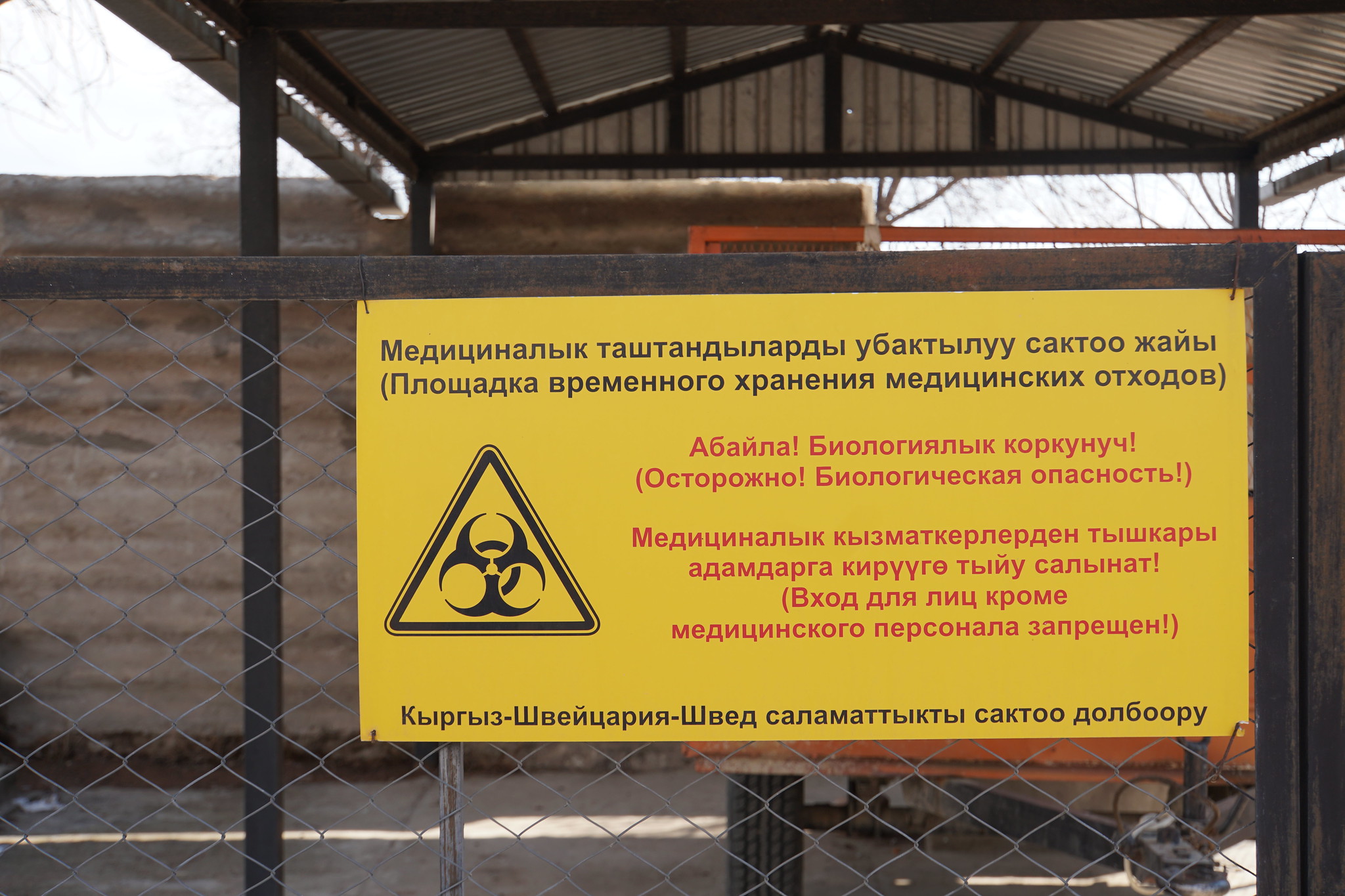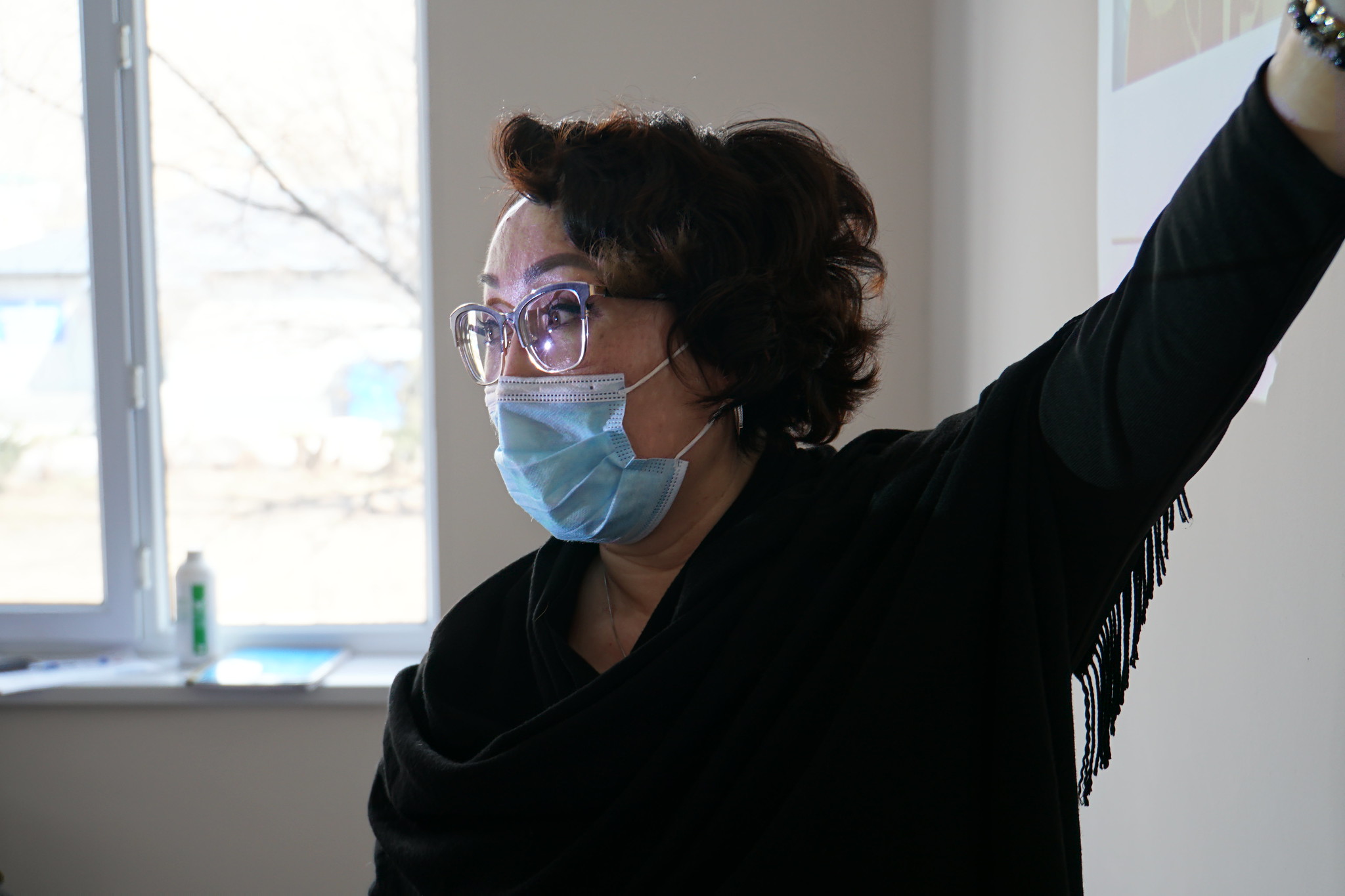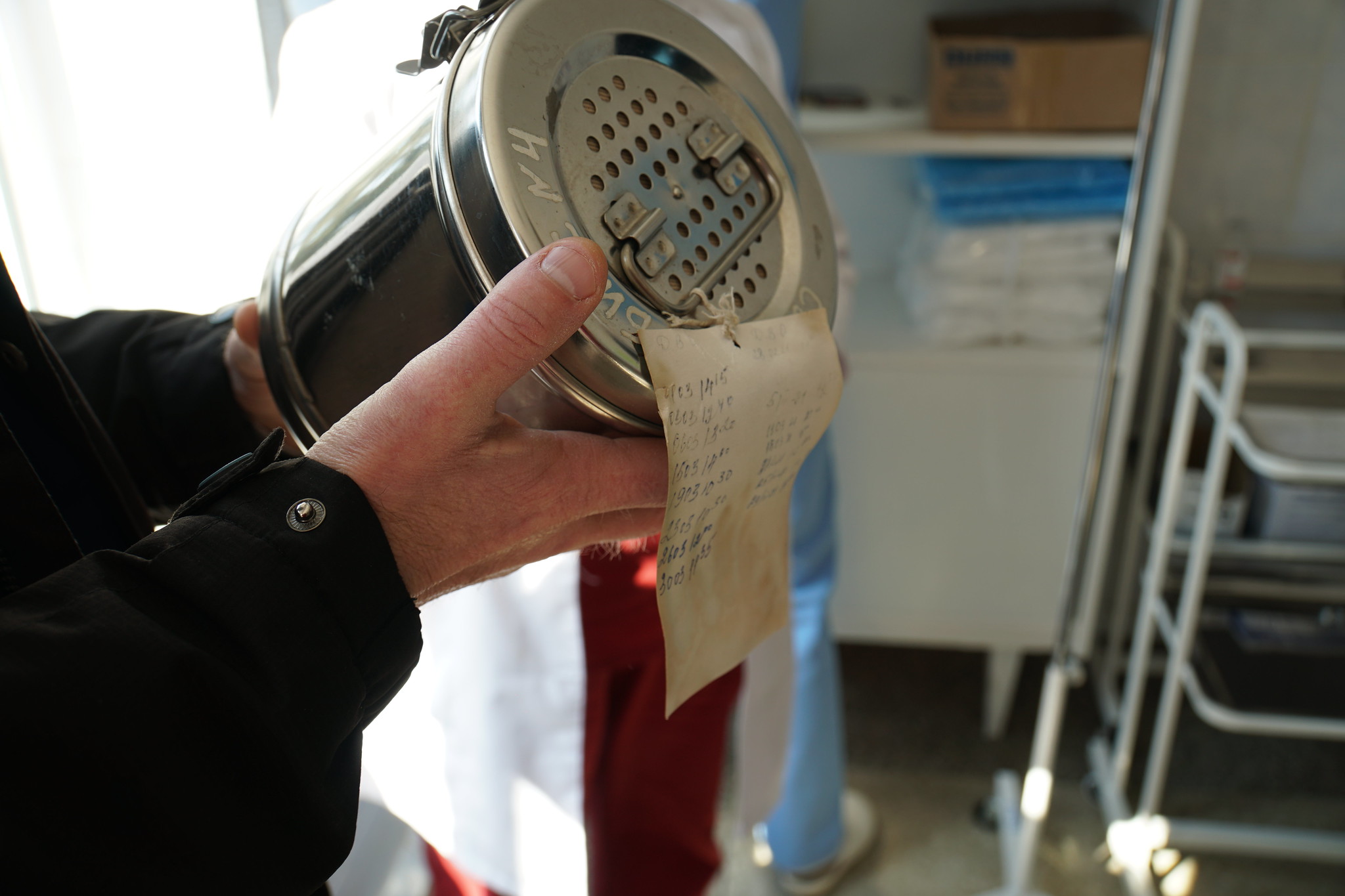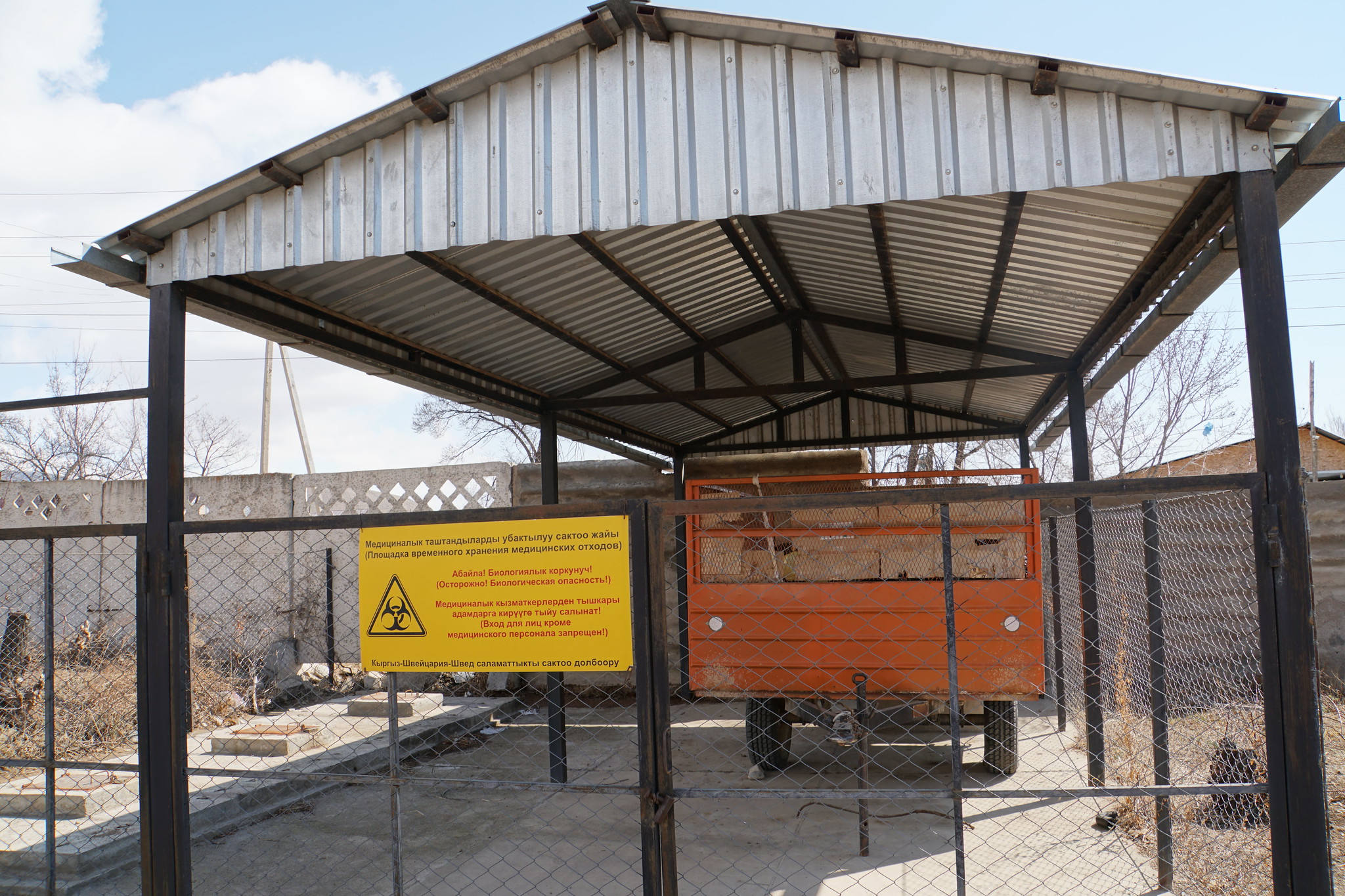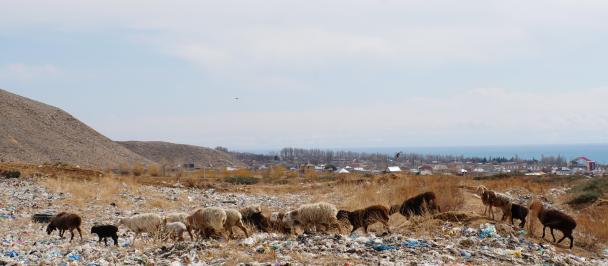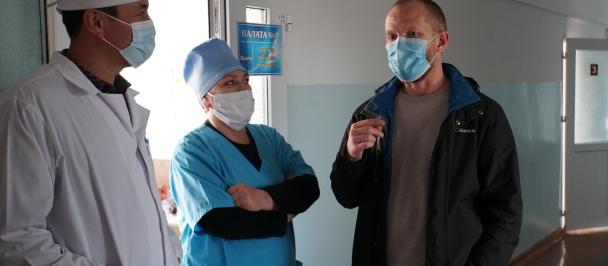Photo: Chyntemir Kalbaev / UNDP Kyrgyzstan
Medical waste makes up about 2-3% of the total amount of waste, but this is one of the most hazardous waste. Waste from medical institutions contains dangerous microorganisms, toxic drugs, and carries a radiological hazard. And this is just a short overview of the risks. Therefore, the issue of their disposal is taken very seriously all over the world. In order to reduce the risks of human infection, the spread of infections and the emergence of epidemics, the Kyrgyz State Medical Institute for Retraining and Advanced Training, together with UNDP, has developed a video course on medical waste management.
A detailed picture is shared by Nadira Sorombayeva, candidate of medical sciences, head of the department of public health of the Kyrgyz State Medical Institute for retraining and advanced training, an expert engaged in solving the problem of disposal of medical waste.
Realize the scale
Estimates of waste data from around the world show that hospitals generate about 0.5 kg of waste per hospital bed per day. However, this figure and the basic waste composition vary greatly depending on local conditions.
For example, higher-income countries generate much more waste and plastic, often accounting for more than half of all medical waste. Because of this huge difference, there is no single best medical waste management solution. Therefore, each country has its own expert staff dealing with the problem in local realities.
For a long time, there was no medical waste accounting system in Kyrgyzstan. Direct work on this issue has been going on for about 20 years, since 2003, and a lot has already been done, but a lot remains to be done.
How is medical waste dangerous?
Patients suffering from various infectious diseases have to take many medical procedures. And there are many invasive ones among them. Injections, droppers, surgery, research - for example, gastroscopy, and so on, which forms a considerable amount of disposable instruments and materials contaminated with biological fluids - dressing, hygienic and others. All this can cause infection of the medical staff, which means that it has a high degree of epidemiological danger. Globally, 16 billion injections are made annually. For Kyrgyzstan, reliable figures of this kind cannot be found, but the scale is easy to imagine.
But that's not all. Medical waste and by-products can also lead to other risks, such as:
● injuries caused by sharp objects;
● poisoning and pollution of the environment as a result of the release of drugs, in particular antibiotics and cytotoxic drugs;
● poisoning and pollution of the environment with sewage;
● poisoning and pollution of the environment with toxic elements or compounds such as mercury or dioxins released during waste incineration.
Impressive, isn't it?
Sad experience
WHO estimates that injecting with contaminated syringes results in 21 million hepatitis B virus (HBV) infections, two million hepatitis C virus infections and 260,000 HIV infections per year on average. And Kyrgyzstan is no exception to these sad statistics.
In developing countries, to which, again, Kyrgyzstan belongs, additional hazards arise due to the fact that people rummage through garbage at waste disposal sites, that is, in garbage dumps (the so-called miners). Waste handlers are at immediate risk of injury from needle pricks and exposure to toxic and infectious materials.
There are also more depressing cases. In June 2000, six children were diagnosed with mild smallpox (vaccinia virus) after playing with glass vials containing an expired smallpox vaccine in a landfill in the Russian city of Vladivostok. The outbreak was localized, but everything could have an unpredictable outcome. Therefore, it is very important that the final stage of medical waste, when it is disposed of in landfills, is safe and does not pose a danger to both the environment and the population.
We have widespread use of radiation sources in devices for medical and other purposes. Naturally, waste is generated in an appropriate amount. And it's not safe. Serious incidents were reported in Brazil in 1988 (where four people died and 28 suffered severe radiation burns), Mexico and Morocco in 1983, Algeria in 1978, and Mexico in 1962. Nothing of the kind has happened in our country yet. But the issue of disposal of radiological waste has not been fully resolved, despite the work done.
The process has begun
For nearly 20 years of work in this area in Kyrgyzstan, many issues have been resolved. The process of waste separation has been established, protocols have been developed for each class, the practice of disinfection with toxic chlorine is no longer used, many hospitals use modern techniques for disinfecting plastic and send it not to a landfill, to poison the environment, but for recycling. But so far there is no clear, well-established system for the disposal of chemical waste and serious risks that are caused by interaction with mercury-containing material have not been prevented. There are many problems.
The process of implementing a good health care waste management system is complex. It entails not only an assessment of the waste categories and existing practices that have already been implemented in Kyrgyzstan, but also the selection of waste management options, the development of a waste management plan, the adoption of institutional policies and guidelines, the creation of a waste management organization, the allocation of human and financial resources. , implementation of plans in accordance with established timelines, and implementation of a program of periodic training, monitoring, evaluation and continuous improvement of the system.
Work in this direction should be carried out continuously, because science is developing, new technologies are coming, and the situation is changing. And decision-makers must see and understand the priority of this problem.
How to minimize the risks of infection?
All medical waste must be disposed of responsibly, even if it is not considered particularly hazardous. In order to reduce the risks of human infection, the spread of infections and the emergence of epidemics, it is important to properly sort and dispose of medical waste. Medical personnel are advised to use a specially designed video course, which details the categories of medical waste and how they are disposed of.
You can watch the course on medical waste disposal on the UNDP Youtube channel at https://www.youtube.com/user/UNDPKG. Note that it was developed by the Kyrgyz State Medical Institute for Retraining and Advanced Training in conjunction with the United Nations Development Program in the Kyrgyz Republic with the financial support of the Government of Japan.
Photo: Chyntemir Kalbaev / UNDP Kyrgyzstan
Photo: Chyntemir Kalbaev / UNDP Kyrgyzstan
Photo: Chyntemir Kalbaev / UNDP Kyrgyzstan

 Locations
Locations